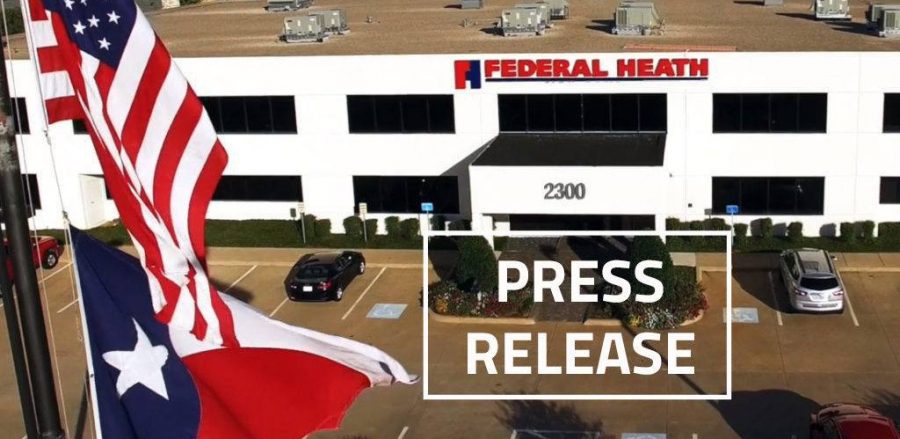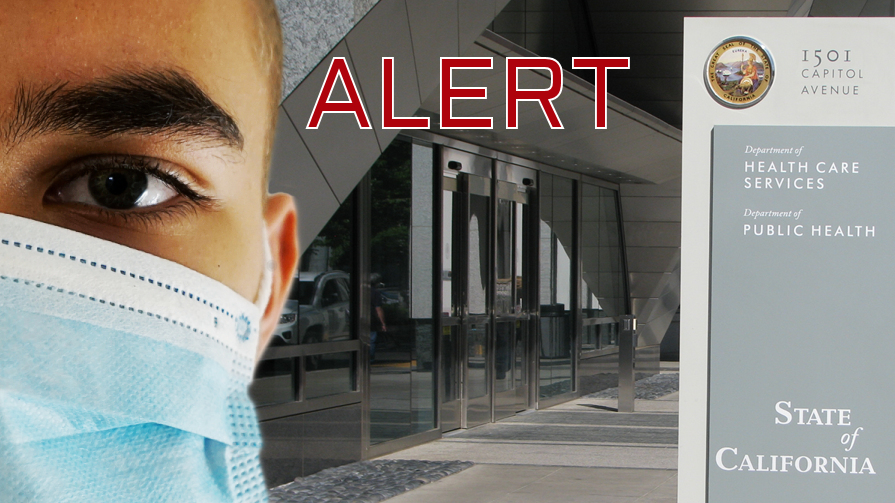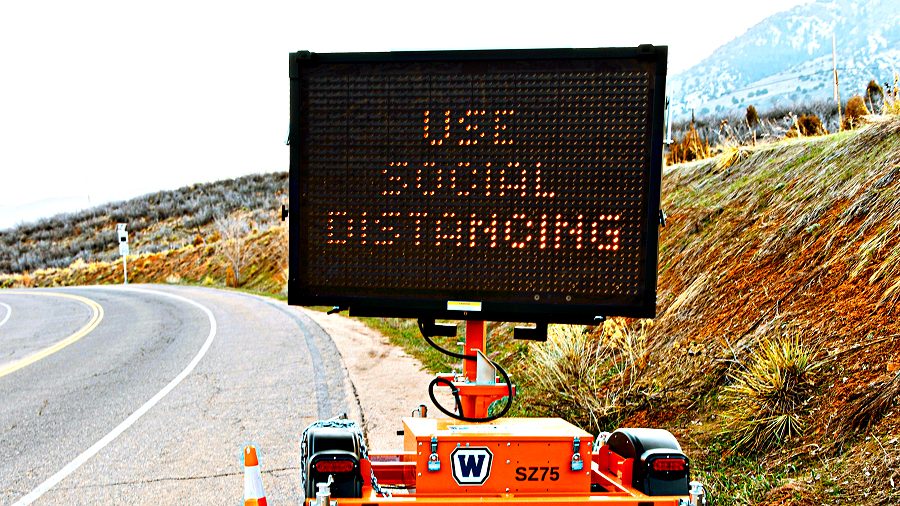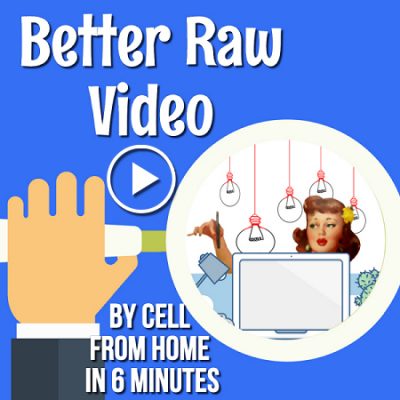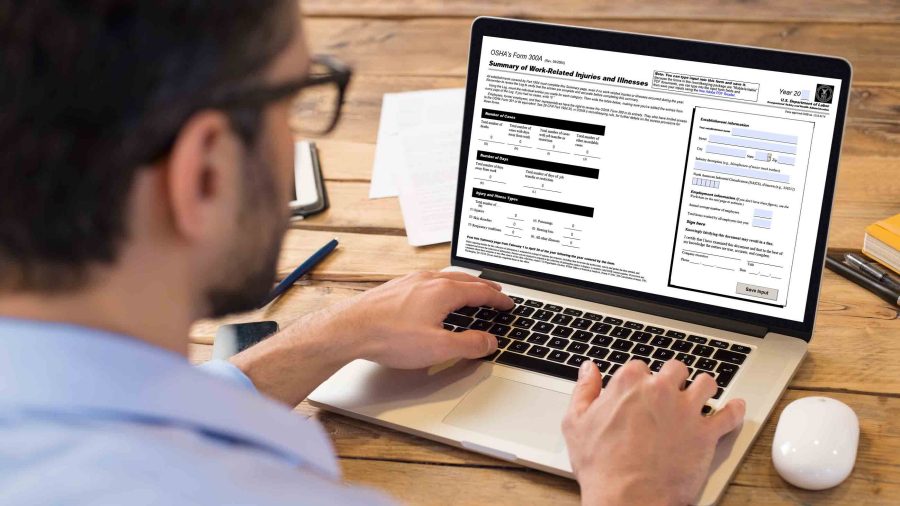Kevin Stotmeister to Receive Kirk L. Brimley Award
Federal Heath’s Kevin Stotmeister Named Kirk L. Brimley Distinguished Service Award Winner for 2020
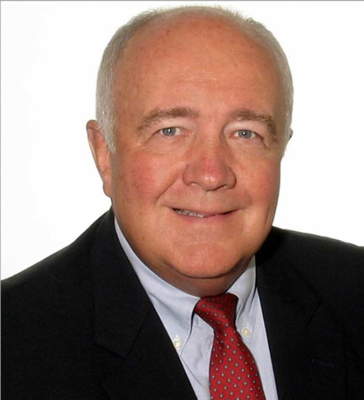
Kevin Stotmeister, former president and CEO of Federal Heath, has been named the recipient of the 2020 Kirk L. Brimley Distinguished Service Award. The International Sign Association presents the award each year to a leader who has made significant contributions to the sign, graphics and visual communications industry.
Continue Reading
PPP Policy Update #3
Another new update form was issued on 6/24:
Here are some highlights from the newest rules:
- “A borrower may submit a loan forgiveness application any time on or before the maturity date of the loan – including before the end of the covered period – if the borrower has used all of the loan proceeds for which the borrower is requesting forgiveness. If the borrower applies for forgiveness before the end of the covered period and has reduced any employee’s salaries or wages in excess of 25 percent, the borrower must account for the excess salary reduction for the full 8-week or 24-week covered period.”
- “A nonpayroll cost is eligible for forgiveness if it was:
-
- paid during the covered period; or
- incurred during the covered period and paid on or before the next regular billing date, even if the billing date is after the covered period.”
For the latest updates, click here.
PREVIOUS UPDATE
The President signed H.R. 7010 — the Paycheck Protection Program Flexibility Act — which passed the House of Representatives last week and the Senate this week. The legislation modifies the Paycheck Protection Program (PPP) to help small businesses through a number of key provisions. It extends the time frame that borrowers have to spend their PPP loans, from 8 weeks to 24 weeks, an important step for most PPP recipients. Additional provisions include:
- Lowering the payroll requirements from 75 percent to 60 percent.
- Extending the loan coverage from June 2020 to December 31, 2020.
- Extending loan term from two years to five years, for the portion that isn’t forgiven.
Celebration of the Life of Robert Jerome “Jerry” Jackson
Remembering Jerry Jackson
June 23, 1935 – June 7, 2020
 Robert Jerome “Jerry” Jackson (pictured right)
Robert Jerome “Jerry” Jackson (pictured right)
It is with heavy heart that we share with you the passing of Jerry Jackson, Director-Public Relations and Executive Director during the 1970’s, returning as CESA/CSA Executive Director (1990-1997). Robert Jerome “Jerry” Jackson, 84, passed away Sunday, June 7, 2020 in Malibu, California.
Continue Reading
CA Public Health Action Alert
Do you need face masks for your business?
Thursday, June 18th, the California Governor issued an Executive Order mandating workplace face coverings with few exceptions, when —
Engaged in work, whether at the workplace or performing work off-site, when:
- Interacting in-person with any member of the public;
- Working in any space visited by members of the public, regardless of whether anyone from the public is present at the time;
- Working in any space where food is prepared or packaged for sale or distribution to others;
- Working in or walking through common areas, such as hallways, stairways, elevators, and parking facilities;
- In any room or enclosed area where other people (except for members of the person’s own household or residence) are present when unable to physically distance.
The California Department of Public Health released updated guidance requiring Californians to wear a face covering in most indoor settings, as well as outdoors when social distancing isn’t possible. Any workers who engage with the public will be required to wear a mask.
You can read the full Executive Order by clicking here.
Published Construction Industry Guidance
In addition to Cal/OSHA Covid construction guidance issued two weeks ago, Fed/OSHA issued new guidance May 26. Similar to California, the Federal guidance “. . . is not a standard or regulation, and it creates no new legal obligations. It contains recommendations as well as descriptions of mandatory safety and health standards. The recommendations are advisory in nature, informational in content, and are intended to assist employers in providing a safe and healthful workplace.” However, “California employers are required to establish and implement an Injury and Illness Prevention Program (IIPP) to protect employees from all worksite hazards, including infectious diseases.”
Previous to this, Governor Newsom issued Published Construction Industry Guidance for the reopening of Stage 2 businesses – which went into effect Friday, May 8.
While construction activities have continued underway in many areas as “essential” since the initial Stay at Home Order, this new info is in line with current practice and protocols and guidance CSA has previously distributed. Members should review the guidance to ensure they are incorporated in current work practices.
The document includes, among other points, cleaning and disinfecting protocols, distancing protocols, control measures and screening, as well as this guidance:
- Establish a written, worksite-specific COVID-19 prevention plan at every facility, perform a comprehensive risk assessment of all work areas, and designate a person at each facility to implement the plan.
- Identify contact information for the local health department where the facility is located for communicating information about COVID-19 outbreaks among employees.
- Train and communicate with employees and employee representatives on the plan.
- Regularly evaluate the workplace for compliance with the plan and document and correct deficiencies identified.
- Investigate any COVID-19 illness and determine if any work-related factors could have contributed to risk of infection. Update the plan as needed to prevent further cases.
- Identify close contacts (within six feet for 10 minutes or more) of an infected employee and take steps to isolate COVID-19 positive employee(s) and close contacts.
- Adhere to the guidelines below. Failure to do so could result in workplace illnesses that may cause operations to be temporarily closed or limited.
PPP Policy Update: Federal Debrief
IMPORTANT UPDATE
The President signed H.R. 7010 — the Paycheck Protection Program Flexibility Act — which passed the House of Representatives last week and the Senate this week. The legislation modifies the Paycheck Protection Program (PPP) to help small businesses through a number of key provisions. It extends the time frame that borrowers have to spend their PPP loans, from 8 weeks to 24 weeks, an important step for most PPP recipients. Additional provisions include:
- Lowering the payroll requirements from 75 percent to 60 percent.
- Extending the loan coverage from June 2020 to December 31, 2020.
- Extending loan term from two years to five years, for the portion that isn’t forgiven.
Published Construction Industry Guidance
In addition to Cal/OSHA Covid construction guidance issued two weeks ago, Fed/OSHA issued new guidance May 26. Similar to California, the Federal guidance “. . . is not a standard or regulation, and it creates no new legal obligations. It contains recommendations as well as descriptions of mandatory safety and health standards. The recommendations are advisory in nature, informational in content, and are intended to assist employers in providing a safe and healthful workplace.” However, “California employers are required to establish and implement an Injury and Illness Prevention Program (IIPP) to protect employees from all worksite hazards, including infectious diseases.”
Previous to this, Governor Newsom issued Published Construction Industry Guidance for the reopening of Stage 2 businesses – which went into effect Friday, May 8.
While construction activities have continued underway in many areas as “essential” since the initial Stay at Home Order, this new info is in line with current practice and protocols and guidance CSA has previously distributed. Members should review the guidance to ensure they are incorporated in current work practices.
The document includes, among other points, cleaning and disinfecting protocols, distancing protocols, control measures and screening, as well as this guidance:
- Establish a written, worksite-specific COVID-19 prevention plan at every facility, perform a comprehensive risk assessment of all work areas, and designate a person at each facility to implement the plan.
- Identify contact information for the local health department where the facility is located for communicating information about COVID-19 outbreaks among employees.
- Train and communicate with employees and employee representatives on the plan.
- Regularly evaluate the workplace for compliance with the plan and document and correct deficiencies identified.
- Investigate any COVID-19 illness and determine if any work-related factors could have contributed to risk of infection. Update the plan as needed to prevent further cases.
- Identify close contacts (within six feet for 10 minutes or more) of an infected employee and take steps to isolate COVID-19 positive employee(s) and close contacts.
- Adhere to the guidelines below. Failure to do so could result in workplace illnesses that may cause operations to be temporarily closed or limited.
COVID-19 Infection Prevention in Construction
SAFETY AND HEALTH GUIDANCE
This information is for construction employers, and describes ways to update their IIPPs to include information on employee training and preventing the spread of coronavirus (SARS-CoV-2), the virus that causes COVID-19, at construction sites. This is mandatory in most California workplaces since COVID-19 is widespread in the community.
Train Employees on COVID-19
- Provide training in a form that is readily understandable by all employees on the following topics:
Information related to COVID-19 from the Centers for Disease Control and Prevention (CDC) – check for updates frequently – including:- What COVID-19 is and how it is spread.
- Preventing the spread of COVID-19 if you are sick.
- Symptoms of COVID-19 and when to seek medical attention.
- How an infected person can spread COVID-19 to others even when they don’t feel sick.
Additional helpful information is on California’s COVID-19 Response webpage.
- Further to this, detailed guidance is found in the linked document (PDF) below, including instructions for the use of cloth face coverings, including:
- Cloth face coverings are not personal protective equipment (PPE) and do not protect the person wearing the face covering.
- CDC has issued guidelines that everyone should use cloth face coverings when around other persons. Employers should provide these coverings for their employees or at least encourage them to use their own.
- Cloth face coverings can help protect people near the wearer, but do not replace the need for physical distancing and frequent hand washing.
- Employees should wash or sanitize hands before and after using or adjusting face coverings.
- Face coverings should be washed after each shift and should be discarded if they no longer cover the nose and mouth, have stretched out or damaged ties or straps, cannot stay on the face, or have holes or tears.
- Practice physical distancing at all times. (Details in linked PDF below)
- Immediately send employees with acute respiratory illness symptoms home or to medical care as needed. Establish procedures to notify local health officials upon learning that someone has a COVID-19 infection. These officials will help employers determine a course of action.
Extensive resources and detailed instructions are found in this PDF guide published by the California Department of Industrial Relations – please read and download a copy here> PDF Guide
Photo by LOGAN WEAVER on Unsplash



